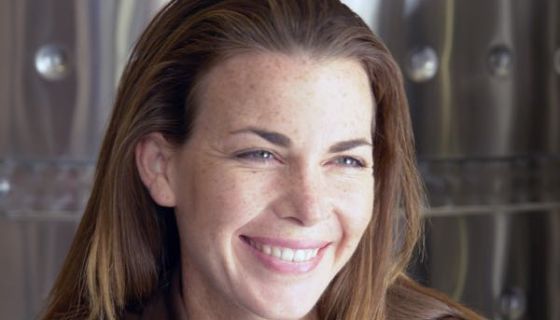From £17.70, 189 Swedish krona, $29.99
If you have ever been sceptical about the combination of Sauvignon Blanc and oak barrels, Lismore’s Barrel Fermented Sauvignon Blanc 2015 from Greyton in South Africa’s Western Cape should dispel your doubts.
My own ambivalence about this interaction of variety and vessel is more often focused on the riper and more pungently aromatic style of Sauvignon Blanc of the so-called New World than on more subtle versions: it is more difficult to make a very good oaked wine from an aromatic variety.
While there are plenty of good examples of barrel-fermented Sauvignon Blanc-dominant wines from Bordeaux (Haut-Brion, Dom de Chevalier), they are usually expensive and often benefit from the inclusion of Sémillon in the blend – with notable exceptions such as Ch Margaux’s Pavillon Blanc, which is varietal Sauvignon. Such wines seem to be able to hold their own even when a percentage of new oak is involved in the fermentation and ageing. Sancerre producers tend to favour older or bigger oak barrels, as does Samantha O’Keefe for this wine at Lismore, which is fermented in 300- and 500-litre neutral (ie older) oak barrels.
New Zealand Sauvignons can also be more complex when barrel fermented (my current favourite is Dogpoint’s highly distinctive Section 94) and there are some very good barrel-fermented Sauvignons (eg Araujo/Eisele, Peter Michael, St Supery’s Dollarhide) in California where they are often known as Fumé Blanc. Alpha Estate’s Fumé Blanc from Florina in north-west Greece is also very good. But in my experience these are among the exceptions.
(For a wider discussion of this topic, see Jancis’s article Oaked Sauvignons – what works? and mine on how well oaked Sauvignon ages. For a more detailed look at various styles of oaked Sauvignon in New Zealand, see New Zealand Sauvignon Blanc – more variety, less sugar, please.)
So I always take my hat off to someone who makes a great barrel-fermented Sauvignon Blanc and I hereby doff said cap to Californian Samantha O’Keefe, who in the early 2000s moved to a former dairy farm in this isolated part of South Africa – in Greyton in the Overberg region of the Western Cape – as Jancis explained when she made the Lismore Chardonnay 2014 her wine of the week last August. It’s rare that we have two wines of the week by the same producer so close together but, to be frank, I could have picked almost any of O’Keefe’s wines, the quality is so consistently high across the range of reds as well as whites.
When I asked O'Keefe what was new at Lismore, she listed 'an expanded facility, new plantings [there are currently around 14 ha/35 acres under vine] and my boys moving into teenage-hood'. I'm not sure which of those is the most challenging, though I can hazard a guess, and more than enough for anyone to manage on their own, especially when the nearest commercial winery, Gabrielskloof, is 55 km (35 miles) away and the local primary school is 75 km away in Elgin.

The Lismore Barrel Fermented Sauvignon Blanc 2015 is made from the fruit of vines planted on deep decomposed shale on east-south-east facing slopes at 320 metres (1,050 ft) in the foothills of the Sonderend mountains. O'Keefe's background notes explain the significance of this terroir:
'The aspect, which faces away from the afternoon sun, combined with a generally low mean February temperature, lends to an extended ripening period that can put harvest 3–4 weeks later than traditional wine-growing regions in South Africa ... The distinct minerality of this Sauvignon Blanc is a clear indication of the cool climate in which it is grown.' The alcohol is a balanced 13% and the pH is a very low 3.18 (total acidity 6.58 g/l).
This low pH she attributes not only to the cool climate but also to the shale and clay soils and the fact that the vines are not irrigated. It means that the wine does not go through malolactic conversion and retains its wonderful freshness.
Once the fruit reaches the winery, it is made in what she describes as an 'oxidative style' (the complete opposite of the vast majority of super-fruity and aromatic Sauvignons), ie it is fermented without the addition of cultured yeasts in older barrels and gets extended lees contact over a period of 11 months, during which time the wine is not moved at all, though from 2016 she is starting to bottle after nine months to retain a little more fruit. The following description of the 2015 is an updated and expanded version of my note from last year at the South Africa New Wave tasting, having re-tasted the wine this week:
Smoky and lightly reductive. Herbal, fumy and enticing. There are hints of Sauvignon in guava and passion fruit but they are very much in the background and I am not sure I would have identified this as Sauvignon if I had tasted it blind. This is gorgeous, has all the complexity of barrel-fermented Sauvignon and the freshness of an unoaked wine. More herbal than citrus, more complex than most Sauvignons, even than most barrel-fermented versions, the rich, almost chewy texture being as important as the flavour. Wild, herbal and fresh length. Rich yet precise with that contrapuntal freshness. Superb wine.
I gave it a score of 17.5/20 and suggested a drinking window of 2017–2021 but I suspect it could well age longer than this – I haven't yet tasted vintages with more bottle age. O'Keefe confirmed that 'the oxidative style makes for a wine that ages beautifully'. She also said that this style of barrel-fermented Sauvignon reflects her 'obsession with texture'.

This is a truly classy and delicious wine that is worth every penny. Take your time with it and enjoy its unfolding in the glass. O'Keefe recommends matching it with, for example, scallops with salsa verde or Asian-fusion dishes. I think it is even more versatile than that.
The wine is imported into the UK by Hallgarten Druitt & Novum Wines and is also available in Sweden and the US. Stockists of the 2015 in the UK include Bedales (London), Hailsham Wine Cellars (East Sussex), Wineman.co.uk, Strictly Wine, Simply Wines Direct (currently offering six bottles for £101.94), Wine Poole (with the best single-bottle price of £17.70) and Prohibition Wines (Muswell Hill, London).
In South Africa and in Switzerland, they have already moved on to the 2016. I asked O'Keefe if it was very different from the 2015 and she replied: 'The 2016 has 5% new oak in the form of two new 500-litre French oak barrels and one 600-litre egg. These changes contributed to a slightly rounder and sweeter finish. 2016 was a better vintage for me so the fruit expression is much more concentrated and slightly more on the tropical side ... the 2017 is more in line stylistically [with the 2015] with more restrained fruit and more obvious minerality and freshness.'














